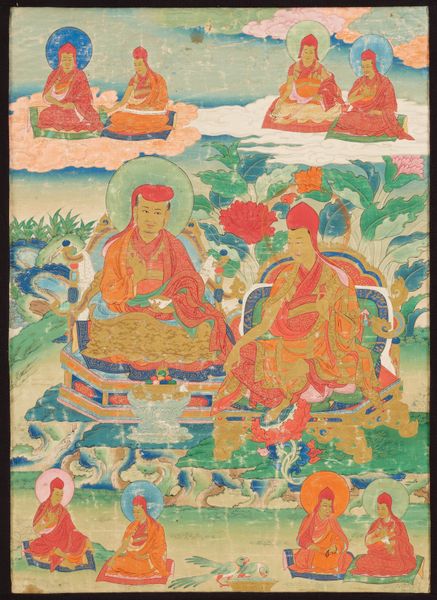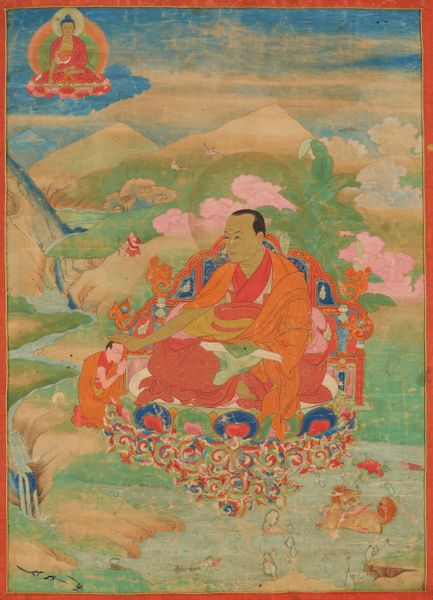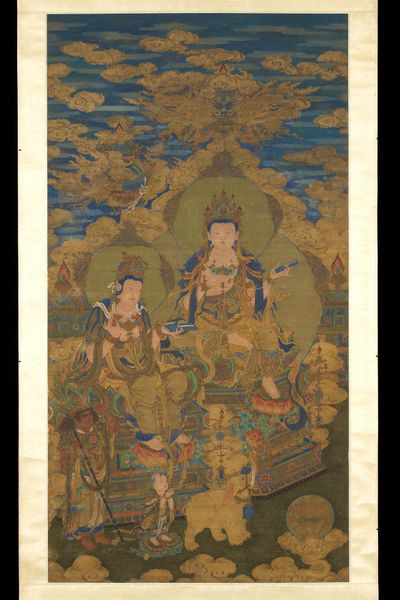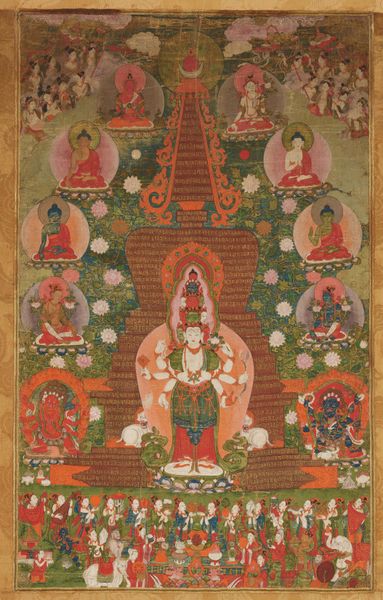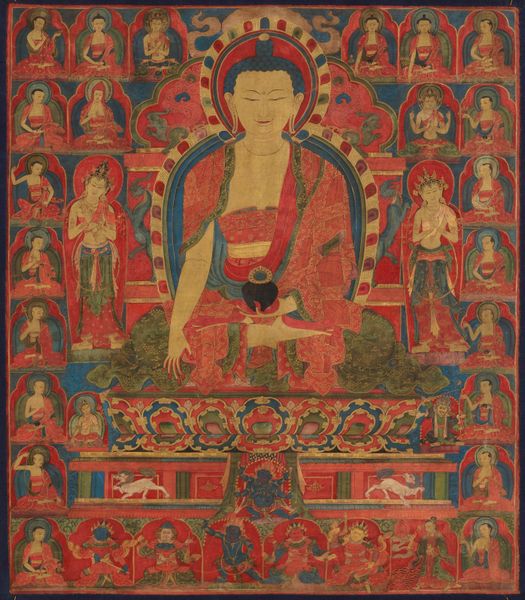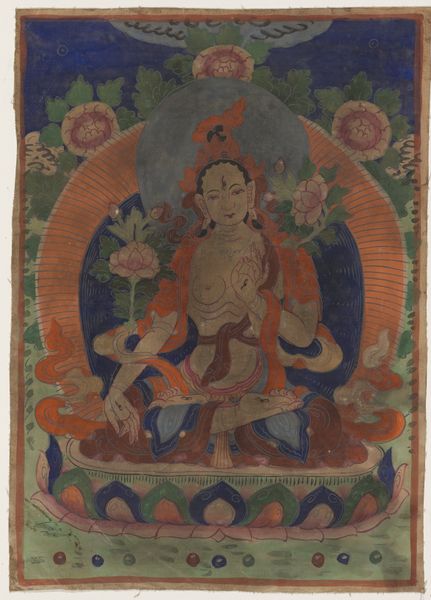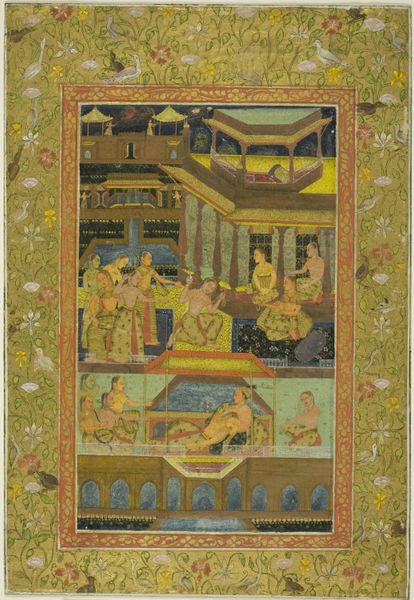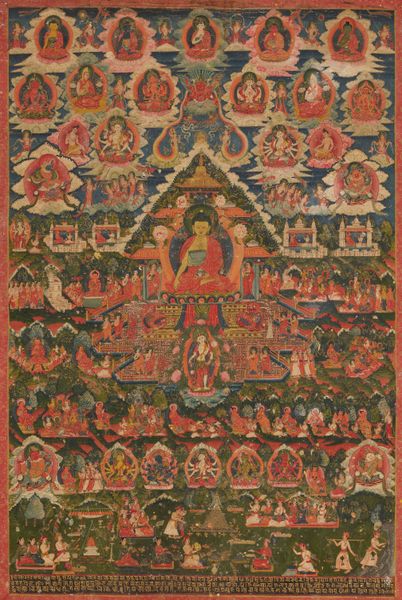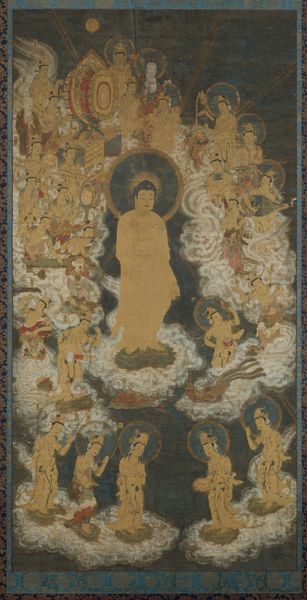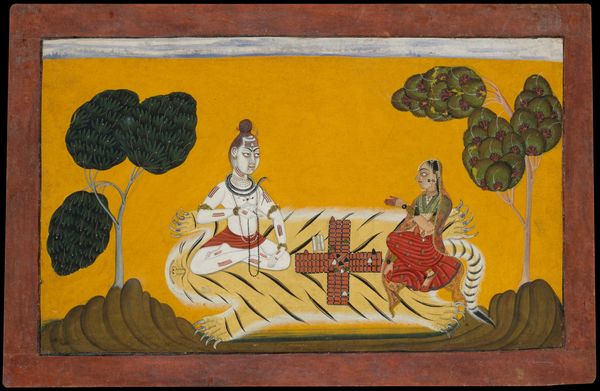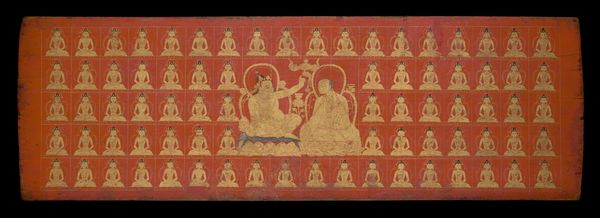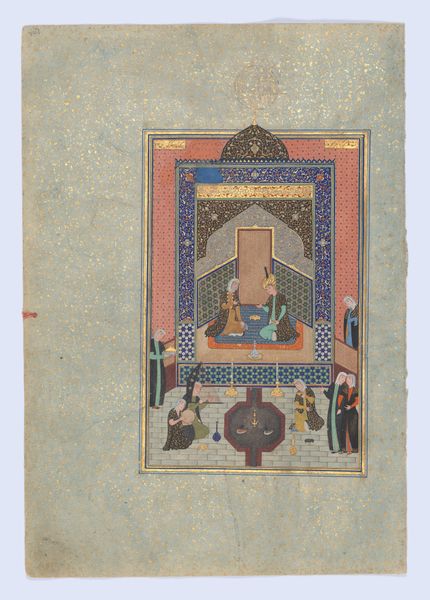
Thanka of Hierachs of the Sakya Lineage c. late 17th century
0:00
0:00
tempera, painting
#
portrait
#
narrative-art
#
tempera
#
painting
#
asian-art
#
naive art
#
earthenware
Dimensions: 31 1/2 x 22 1/2 in. (80.01 x 57.15 cm) (image)
Copyright: Public Domain
Curator: This is a Thangka painting, specifically a representation of the Hierarchs of the Sakya Lineage, dating from the late 17th century. It’s currently part of the Minneapolis Institute of Art's collection. It's rendered in tempera. What's your immediate reaction? Editor: It has a captivating stillness about it, doesn't it? The repetition of seated figures and the ethereal backgrounds create a very contemplative atmosphere. Curator: Absolutely. And consider the social and historical context. Thangkas like this served not just as art, but as instructional tools, illustrating complex Buddhist teachings and lineage. They acted almost as visual resumes, legitimizing spiritual authority. Editor: That layering of figures vertically certainly establishes a hierarchy, but it also evokes a powerful sense of continuity. Those haloes, for example – what do they signify in this lineage? They're rendered in very distinct colors. Curator: The blue and orange haloes, you'll find, signify different levels of spiritual attainment. Colors throughout Thangkas possess symbolic weight, dictating importance and character. Gold is usually used for deities and those closest to enlightenment. The figures are meticulously placed in order of seniority. It’s really a painting about power structures. Editor: I am intrigued by the repeated hand gestures too. Look, nearly every figure has a specific mudra. Aren’t those gestures meant to symbolize different aspects of teaching or states of being? Curator: Precisely. Those gestures communicate layers of meaning. For example, the figure making the vitarka mudra, symbolizes transmission of Buddhist doctrine. Each gesture has resonance that stems from centuries of ritual and belief. Considering the work's purpose, how do you think it plays into the establishment of Sakya legitimacy during its period? Editor: To me, the consistent symbols and colors project a deliberate effort to establish and reinforce cultural memory, providing the sense of an unchanging, eternal spiritual heritage. Curator: Precisely! By embedding specific codes within the image, these Thangkas served as incredibly effective instruments for maintaining power and control, particularly relevant amidst political rivalries during the late 17th century. Editor: Understanding the iconography opens up the work's profound capacity for linking visual memory with religious meaning, ensuring the continuity of tradition. It’s more than simply aesthetic. Curator: And in its cultural milieu, an object imbued with potency and purpose! Thanks, this insight brings an essential layer to this painting.
Comments
minneapolisinstituteofart about 2 years ago
⋮
These finely preserved and colorful thankas, possibly from a larger set, depict several monks of the Sakya ("red hat") lineage. Thanka paintings portraying the hierarchical lineage of Sakyapa monks were especially popular with monasteries of that sect. In such portrayals, one or two important personages of the lineage are usually represented as large figures in the center surrounded by smaller images of lesser stature. Twenty monks are illustrated in these two paintings, each is identified by small Tibetan gold script under or next to each lama. The four large portraits include: Tsarchen Chokyi Gyalpo, Gorumpa Kunza Legpa, Ketsum Chenpo Namko Legpa, and Palden Lama Dampa Sonam Gyaltsen. While these thankas display the brilliant blue-green style of Chinese landscape tradition that was popular in 17th and 18th century Tibet, the finely etched and unetched gold work, style of the monk's hats, and technical aspects of the foliage all refer to similar thankas that are dated to the seventeenth century.
Join the conversation
Join millions of artists and users on Artera today and experience the ultimate creative platform.
